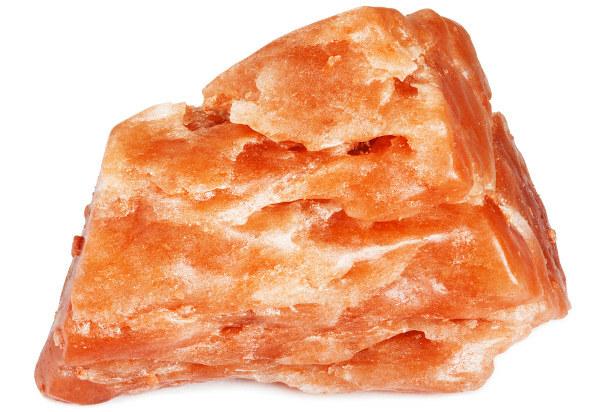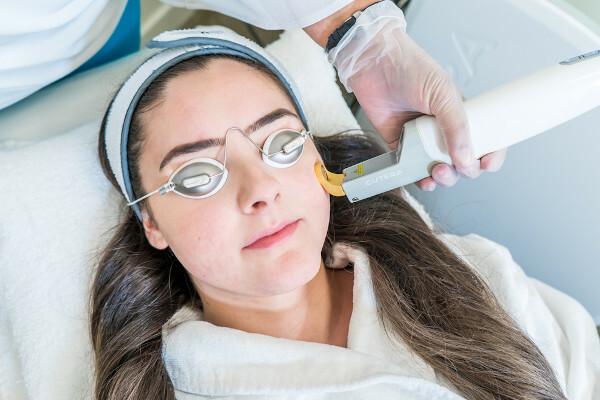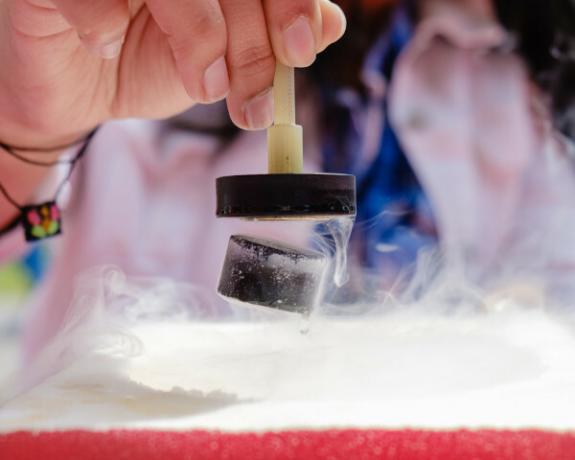THE yttrium, symbol Y and atomic number 39, is a silver-colored metal located in Group 3 of the Periodic Table, just below the scandium, symbol Sc. However, chemically, yttrium is very similar to lanthanum and other lanthanides, being considered a member of the group of rare earth metals.
This metal was widely used in the manufacture of old television screens and also of more modern LCD models, as this element helps in the generation of primary colors. It also has relevant industrial applications, such as in the manufacture of catalysts, lasers, ceramics and superconductors, which are materials without electrical resistance.
See too: Gold — chemical element with excellent electrical conduction ability
summary about yttrium
- Yttrium is a silvery metal located in Group 3 of the Periodic table
- Despite not being in the f block, yttrium is considered a rare earth metal.
- Its main mineral sources are:
- the monazite;
- bastnasite;
- xenothymia;
- the gadolinite.
- It is widely used in the field of electronics because of its luminescent properties.
- It is also used in the manufacture of lasers.
- Yttrium compounds can be used as superconductors, which allowed the advancement of the magnetic levitation technique.
- Yttrium was discovered in the Swedish village of Ytterby, site of the discovery of several metals rare earths of the Periodic Table.
Yttrium properties
- Symbol: Y.
- Atomic number: 39.
- Atomic mass: 88,906 c.u.
- Electronegativity: 1,2.
- Fusion point: 1530°C.
- Boiling point: 3264°C.
- Density: 4.5 g.cm-3 (at 20°C).
- Electronic configuration: [Kr] 5s2 4d1.
- Chemical Series: group 3; transition metals; rare earth metals.
characteristics of yttrium
Yttrium is a silver colored and shiny metal. considered stable in contact with air, since a thin layer of oxide forms on its surface, preventing the attack of the metallic substance below it. However, this layer ends up diminishing the shine of the metal.

As for reactivity, yttrium can react:
- with halogens, at room temperature;
- with oxygen gas and with most nonmetals, under heating:
- 4 Y + 3 O2 → 2 Y2THE3
- 2 Y + 3 X2 → 2 YX3, with X = F, Cl, Br and I
In addition, yttrium also reacts slowly with cold water and dissolves in acids diluted, releasing gas hydrogen.
Being similar to lanthanum and other lanthanides, the described and known chemistry for yttrium is one in which it has an oxidation state equal to +3, when this element loses its three valence electrons (4s2 and 5d1).
Read too: Barium — alkaline earth metal known for its toxicity
Where can yttrium be found?
the yttrium can occur in many minerals concomitantly with other rare earth metals. One of these minerals is monazite, a phosphate that may contain, in addition to yttrium itself, several of these elements, such as:
- cerium (Ce);
- lanthanum (La);
- neodymium (Nd);
- praseodymium (Pr);
- thorium (Th).

Other possible yttrium minerals are:
- bastnasite (a rare-earth fluorocarbon);
- xenothymia (a yttrium orthophosphate, also known as xenothym or xenothymium);
- gadolinite (a rare-earth silicate, also known as ytterbite).

The composition is varied, but an ore rich in yttrium is assumed to have about 1% by mass of the element.
It can be obtained in several ways. The classic methodology of Obtaining involves acid or basic leaching (washing), which generates yttrium solutions, using:
- hydrochloric acid;
- sulfuric acid;
- sodium hydroxide.
However, leaching is not so selective as it creates a solution with all the rare earths of the mineral. Therefore, after World War II, more refined techniques for separation were made, through ion exchange, for example, which provided the selectivity that was lacking, making it possible to separate the various metals present in minerals.
To obtain yttrium in its pure (metallic) form, YF compounds should be reduced3 or YCl3, which should be done with calcium or potassium, respectively.
Yttrium applications
Yttrium has applications of great importance in the field of electronics. Like many rare-earth, yttrium compounds such as Y2THE3, have luminescent properties (emit light upon a stimulus, such as a ionizing radiation), also known as phosphors. Yttrium phosphors were applied to television tubes colors to produce the primary colors green, blue and red.
These compounds can be used in materials other than televisions. It is possible to use them in the manufacture of optical fibers, fluorescent lamps, LEDs, paints, varnishes, computer screens etc.
Due to its luminescent properties, yttrium can also be used in manufacturing of lasers, as in the case of the Nd: YAG laser, whose acronym stands for yttrium garnet (a mineral class) and aluminum, of formula Y3Al5THE12, doped with neodymium (Nd).
It is worth remembering that laser is a type of characteristic, monochromatic light emission, that is, with a length of wave specific. In the case of Nd: YAG, neodymium, being in the form of Nd ion3+, is responsible for the emission of light laser, while the YAG crystals are responsible for being the solid matrix.
This high power laser can be used:
- in surgical procedures of medicine and dentistry;
- in digital communications;
- in measuring temperature and distance;
- in industrial cutting machines;
- in microwelds;
- in experiments in the field of photochemistry.

A common application in medicine is in the field of ophthalmology, where the laser is applied in the treatment of retinal detachment and for the correction of myopia. In dermatology, it is used to exfoliate the skin.
Yttrium is also used in superconductors. That's because in 1987, American physicists discovered the superconducting properties of a yttrium compound, Y1,2ba0,8CuO4, usually called YBCO. You superconductors are materials capable of conducting electricity without resistance, at a very low temperature, known as the critical temperature.

In the case of YBCO, the critical (superconducting) temperature is 93 K (-180 °C), above the boiling temperature of nitrogen liquid, which is 77 K (-196 °C). This greatly facilitated its use, since previous superconductors, such as lanthanum (La2CuO3), had a critical temperature in the range of 35 K (-238 °C), requiring cooling with liquid helium, which is more expensive than nitrogen.
Superconductors are at the heart of the magnetic (or quantum) levitation effect, in which a magnetic field (magnet) allows the levitation of the superconductor, explained by the Meissner effect. Such technology was explored for the production of Maglev trains, which float on the tracks.
![Maglev train in Shanghai, China. [2]](/f/90f8d7b9365a1f52d4e51f5367f7fc62.jpg)
Yttrium also has other applications, such as production of catalysts and ceramics. Yttrium ceramics are used as abrasives and refractory materials (resistant to high temperatures) for the production of:
- sensors of oxygen in cars;
- protective layers of jet engines;
- cutting instruments with corrosion and wear resistance.
Know more:Electromagnetism — study of electricity, magnetism and their relationships
precautions with yttrium
Despite not being a toxic or carcinogenic material, inhaling, ingesting, or touching yttrium can cause irritation and damage to the lungs. In powder form, yttrium can ignite. The greatest concern is in relation to yttrium lasers, as their great power can be harmful to the eyes.
history of yttrium
The name yttrium derives from Ytterby, a Swedish village that contains a mine where four rare earth metals were discovered:
- yttrium;
- ytterbium;
- erbium;
- ytterbium.
The scientific history of this village begins in 1789, when Carl Axel Arrhenius noticed a chunk of black rock over a rock. Arrhenius was a young lieutenant in the Swedish army and had a great appreciation for minerals. Initially assumed as tungsten, the black rock was sent to Johan Gadolin, a friend of Arrhenius, professor of chemistry at the Royal Academy in Turku, Finland.
Gadolin realized that the black rock, from the mineral ytterbite (later renamed gadolinite, in his honor), contained an oxide of new elements rare Lands. Swedish chemist Anders Gustaf Ekeberg confirmed Gadolin's discovery and called it yttria oxide.
Subsequently, for the first time the yttrium element was isolated, although mixed with other elements, in 1828, by Friedrich Wöhler, who passed gas chlorine by the mineral gadolinite and thus formed yttrium chloride (YCl3) anhydrous, which was further reduced to metallic yttrium using potassium.
In the end, the black rock discovered by Arrhenius was found to contain oxides of eight rare earth metals:
- erbium;
- terbium;
- ytterbium;
- scandium;
- thulium;
- holmium;
- dysprosium;
- lutetium.
Solved exercises on yttrium
question 1
(Unaerp-SP) The phenomenon of superconduction of electricity, discovered in 1911, was once again the object of attention of the scientific world with the finding by Bendnoz and Müller that ceramic materials can exhibit this type of behavior, earning a Nobel Prize to these two physicists in 1987. One of the most important chemical elements in the formulation of superconducting ceramics is yttrium:
1s2 2s2 2p6 3s2 3p6 4s2 3d10 4p6 5s24d1
The number of shells and the number of most energetic electrons for yttrium will be, respectively:
A) 4 and 1
B) 5 and 1
C) 4 and 2
D) 5 and 3
E) 4 and 3
Resolution:
Alternative B
THE valence layer of yttrium is the fifth shell, having only 2 electrons in the 5s subshell2. Thus, it can be concluded that yttrium has 5 layers. The most energetic sublevel is the last to be placed in the eletronic distribution, as this is an increasing order distribution of energy. Therefore, the most energetic sublevel is 4d1, which has only 1 electron.
question 2
Yttrium oxide, Y2THE3, is a compound used to manufacture superconducting ceramics, such as YBCO, which has yttrium, barium, copper and oxygen. In the formation of the superconductor, yttrium maintains the same oxidation number that it has in yttrium oxide. This oxidation number is equal to:
A) -3
B) 0
C) +3
D) -2
E) +2
Resolution:
Alternative C
As oxygen has, in oxides, oxidation number (the charge that the ion acquires when performing the ionic bond) equal to -2, the calculation of the oxidation number of yttrium can be done as follows:
2x + 3 (-2) = 0
Where x is the oxidation number of yttrium to be calculated, the equation must be set equal to zero, because the oxide is electrically neutral, not being a ion.
Doing the calculations correctly:
2x + -6 = 0
2x = 6
x = 3
We have that the value of x is equal to +3.
image credit
[1] thoughtsofjoyce / shutterstock
[2] ChameleonsEye / shutterstock
By Stefano Araújo Novais
Chemistry teacher
